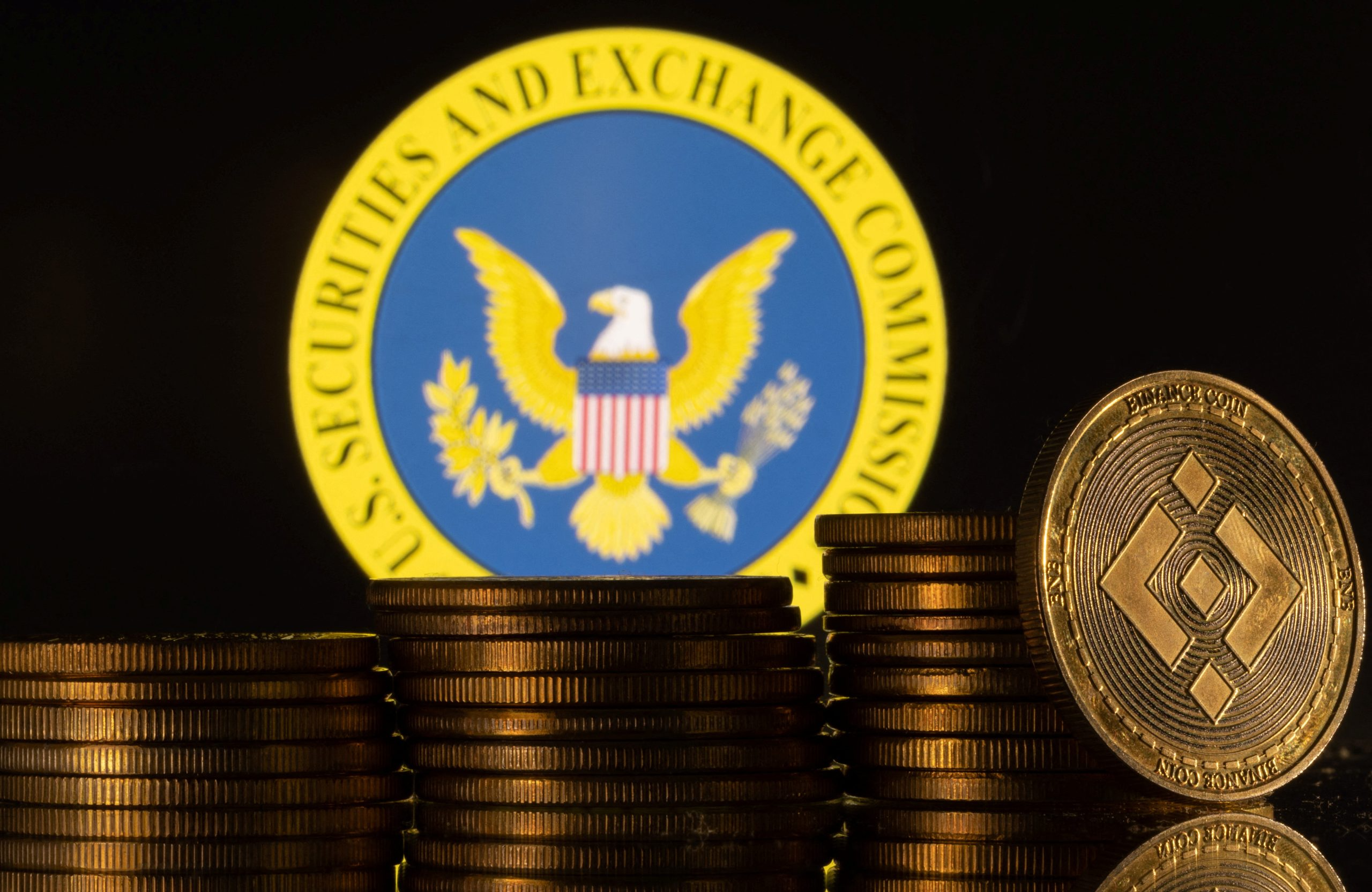The United States is experiencing unprecedented changes in Bitcoin and cryptocurrency regulation under the Trump administration. With executive orders establishing strategic reserves, congressional “Crypto Week” initiatives, and fundamental shifts in regulatory approach, America is positioning itself as the global leader in digital assets. This comprehensive analysis covers all the latest developments shaping Bitcoin regulatory news today in the USA.
Executive Orders Reshaping Bitcoin Policy Framework
Trump’s Strategic Bitcoin Reserve Executive Order
President Donald Trump signed an executive order on March 6, 2025, establishing a Strategic Bitcoin Reserve and U.S. Digital Asset Stockpile, positioning the United States as a leader among nations in government digital asset strategy. This landmark decision marks a fundamental shift in how the federal government approaches Bitcoin and digital assets.
The Strategic Bitcoin Reserve will be capitalized with bitcoin owned by the Department of the Treasury that was forfeited as part of criminal or civil asset forfeiture proceedings. The government currently holds more than 207,000 Bitcoins, worth approximately $17 billion, making this one of the largest government-controlled Bitcoin reserves globally.
White House Crypto and AI Czar David Sacks emphasized that the reserve will be funded exclusively with bitcoin seized in criminal and civil forfeiture cases, ensuring that taxpayers bear no financial burden. This approach addresses concerns about government spending while establishing Bitcoin as a legitimate reserve asset alongside traditional stores of value like gold.
Digital Financial Technology Leadership Order
On January 23, 2025, President Trump signed an executive order that sets forth the administration’s policy “to support the responsible growth and use of digital assets, blockchain technology, and related technologies across all sectors of the economy.” This comprehensive order establishes several key priorities that fundamentally alter the regulatory landscape.
The executive order creates the President’s Working Group on Digital Asset Markets, chaired by David Sacks and including representatives from major financial regulatory agencies. Within 180 days, the Working Group must propose a Federal regulatory framework governing the issuance and operation of digital assets, including stablecoins, in the United States.
Importantly, the order prohibits any agencies from undertaking any action to establish, issue, or promote Central Bank Digital Currencies (CBDCs) within the US or abroad, immediately terminating any ongoing plans or agency initiatives to develop CBDCs. This represents a clear departure from global trends, where many countries are exploring digital versions of their national currencies.
Congressional Action and “Crypto Week” Initiatives
House “Crypto Week” and Key Legislation
House Committee on Financial Services Chairman French Hill, House Committee on Agriculture Chairman GT Thompson, and House Leadership announced that the week of July 14th will be “Crypto Week,” with the House considering the CLARITY Act, the Anti-CBDC Surveillance State Act, and the Senate’s GENIUS Act. This concentrated legislative focus represents the most significant congressional attention to cryptocurrency regulation in years. The timing coincides with increased industry pressure for regulatory clarity and the Trump administration’s pro-crypto stance.
Market Structure and Stablecoin Legislation
Senator Tim Scott, chairman of the Senate Banking Committee, announced that legislation establishing rules for U.S. crypto markets will be finished by September 30, 2025. This timeline, while later than President Trump’s preferred August deadline, represents concrete progress on comprehensive market structure reform. Stablecoin legislation could be the first to move forward, as there was significant bipartisan support for a framework during the last Congress, with House Financial Services Committee Chair French Hill releasing a revised version and an alternate version called the GENIUS Act introduced in the Senate. The legislation addresses fundamental questions about which regulatory agencies should oversee different types of digital assets, with ongoing debates about SEC versus CFTC jurisdiction over various cryptocurrencies.
SEC Transformation and Crypto Task Force

New Leadership and Approach
The Securities and Exchange Commission has undergone dramatic changes under the new administration. Trump nominated Paul Atkins, a former SEC commissioner and financial regulatory consultant who advised a digital asset industry trade group. As the new SEC chair, he represents a considerable departure from the Biden administration’s enforcement-heavy approach. On January 21, 2025, two days before President Trump signed the Executive Order, the SEC created its own Crypto Task Force dedicated to developing. A comprehensive and clear regulatory framework for crypto assets, chaired by Commissioner Hester Peirce.
Enforcement Policy Changes
On February 21, 2025, the SEC closed its investigations into Opensea and Robinhood without taking further action and dismissed claims against Coinbase. Then, on February 27, 2025, the SEC announced that memecoins no longer would be considered securities subject to SEC oversight.
These actions signal a fundamental shift away from the “regulation by enforcement” approach that characterized the previous administration. Commissioner Peirce criticized the SEC’s past practice of relying primarily on enforcement actions to regulate crypto retroactively, stating that the Task Force’s focus will be to help the Commission draw clear regulatory lines and provide realistic paths to registration.
Public Engagement and Roundtables
The SEC’s Crypto Task Force held a series of roundtables discussing key areas, including crypto trading regulation, custody considerations, and tokenization, with sessions open to the public at SEC headquarters and streamed live. This transparent approach marks a significant departure from previous regulatory processes.
Federal Banking and Treasury Policy Changes
Banking Sector Integration
The Federal Deposit Insurance Corporation and Federal Reserve have eased restrictions on banks handling crypto, rolling back prior guidance that required pre-approval for digital asset activities. This policy shift enables traditional financial institutions to more easily integrate cryptocurrency services. Bank of America CEO Brian Moynihan recently stated that with proper regulatory clarity, “the banking system will come in hard on the transactional side” of cryptocurrency, describing crypto as “just another form of payment.” This institutional embrace represents a major validation of digital assets within traditional finance.
Treasury Department Initiatives
Treasury Secretary Scott Bessent and Commerce Secretary Howard Lutnick will oversee further policy development, with a focus on budget-neutral acquisition strategies for bitcoin. The Treasury Department is developing comprehensive strategies for managing the Strategic Bitcoin Reserve and Digital Asset Stockpile. The administration is also promoting USD-backed stablecoins as a tool for maintaining dollar sovereignty globally, recognizing that while 98 percent of stablecoins are pegged to the dollar, over 80 percent of stablecoin transactions happen abroad.
State-Level Regulatory Developments
Preemption and Federal Framework
Current stablecoin regulations operate primarily at the state level, creating compliance complexities for companies operating across multiple jurisdictions. The proposed federal framework aims to create uniform standards while potentially preempting conflicting state regulations. However, state regulators maintain significant influence over money transmission and other aspects of cryptocurrency operations. The balance between federal and state authority remains a key consideration in developing comprehensive regulatory frameworks.
Innovation-Friendly Jurisdictions
Several states have emerged as crypto-friendly jurisdictions, creating competitive advantages for businesses choosing where to establish operations. The federal framework development may influence how states approach their own digital asset regulations.
International Implications and Global Competition
America as Crypto Capital
At Davos, President Donald Trump addressed delegates virtually, emphasizing that the United States will be the Crypto Capital of the world. This positioning represents strategic competition with other nations developing their digital asset frameworks. Europe’s stablecoin framework, known as Markets in Crypto-Assets, came into full effect in January 2025, while the United Kingdom set up a CBDC lab, putting the United States at odds with peers exploring digital currencies. The U.S. approach of rejecting CBDCs while embracing private stablecoins represents a unique regulatory philosophy.
Comparative Regulatory Approaches
Canada’s regulatory clarity has made Toronto a launchpad for blockchain growth, with Wall Street taking notice through acquisitions like Robinhood’s purchase of Canadian crypto firm WonderFi. The U.S. is working to create similar clarity to attract global crypto businesses and investment.
Industry Response and Market Impact

Institutional Adoption Acceleration
With greater regulatory clarity, institutional engagement in digital assets is likely to expand, with major financial institutions closely monitoring developments. Companies like MicroStrategy have led corporate Bitcoin adoption, rebranding as “Strategy” to reflect their transformation into a Bitcoin-focused entity. At Consensus 2025 in Toronto, JPMorgan, Ondo, and Chainlink announced a $100 billion bet on blockchain with a new platform to tokenize real-world assets, representing. The first interoperability between a bank’s permissioned blockchain environment and a public blockchain.
Market Performance and Investor Confidence
Bitcoin briefly hit an all-time high after the advancement of stablecoin legislation stoked hopes of regulatory clarity under President Donald Trump. The largest cryptocurrency is climbing as much as 2.7% to a record $109,856. This market response demonstrates investor confidence in the regulatory developments. The combination of clear regulatory frameworks, government. Bitcoin reserves and institutional adoption are creating unprecedented momentum for cryptocurrency markets in the United States.
Compliance and Legal Considerations
Regulatory Compliance Framework
Companies engaged with digital assets should assess corporate governance policies and procedures related to custody of digital assets, legal risks, including security and commodity issues, and tax treatment as adoption grows. The evolving regulatory landscape requires businesses to maintain flexible compliance strategies. The new framework will likely introduce specific reporting requirements, operational standards, and consumer protection measures that companies must navigate. Early preparation for these requirements provides competitive advantages as regulations solidify.
Legal Risk Assessment
Digital asset companies must evaluate how new regulations affect their business models, particularly regarding. The classification of tokens as securities or commodities. The SEC’s new approach promises clearer guidance but requires ongoing legal analysis as policies develop.
Future Outlook and Predictions
Legislative Timeline
Senator Lummis acknowledged that the legislative process for comprehensive crypto regulation involves complex coordination between multiple committees and agencies, with market structure legislation expected by September 30, 2025. The compressed timeline reflects urgency from both the administration and Congress to establish clear rules while maintaining American competitiveness in the global digital asset race.
Long-term Strategic Implications
The establishment of a Strategic Bitcoin Reserve represents a paradigm shift in how governments view cryptocurrency. The BITCOIN Act proposes allowing the Treasury Department to directly purchase 1 million Bitcoin, acquiring approximately 5% of the total Bitcoin supply worth about $88 billion as of March 2025. This level of government investment would fundamentally alter. Bitcoin’s role in the global financial system, potentially influence other nations to develop similar strategies.
Challenges and Considerations
Implementation Complexities
Despite positive momentum, SEC Commissioner Caroline Crenshaw noted that while roundtables have provided valuable input, “when it comes to crypto, it does not appear to me that the SEC is facing problems with ready or easy solutions,” emphasizing the need for careful, methodical rulemaking processes. The complexity of digital assets requires nuanced regulatory approaches that balance innovation with consumer protection. Rushing implementation could create unintended consequences or regulatory gaps.
Political and Economic Risks
Democratic Representative Maxine Waters criticized the Bitcoin reserve proposal as “silly,” arguing. That crypto is not “an essential input that powers the U.S. economy and day-to-day life for American families.” Political opposition could influence implementation timelines and scope. Economic volatility in cryptocurrency markets also presents risks for government reserves, requiring careful risk management strategies and clear policies for market fluctuations.
Conclusion
Bitcoin regulatory news today in the USA reflects a historic transformation in government approach to digital assets. From executive orders establishing strategic reserves to comprehensive congressional legislation and fundamental SEC policy changes. The United States is positioning itself as the global leader in cryptocurrency regulation.
The convergence of pro-crypto leadership, clear legislative timelines, and industry-friendly policies creates unprecedented opportunities for Bitcoin and digital asset growth. However, successful implementation requires careful navigation of complex legal, technical, and political challenges.
As America works to become the “crypto capital of the world,” these regulatory developments will likely influence global digital asset policies and market dynamics for years to come. Stakeholders must stay informed about ongoing changes while preparing for a fundamentally different regulatory environment. That embraces rather than restricts cryptocurrency innovation.
The next several months will be critical as proposed legislation moves through Congress, regulatory frameworks take shape, and the Strategic Bitcoin Reserve becomes operational. These developments represent not just policy changes but a fundamental shift in how the United States approaches the future of money and financial technology.
Frequently Asked Questions
Q: What is the Strategic Bitcoin Reserve, and when was it established?
A: The Strategic Bitcoin Reserve was established by President Trump’s executive order on March 6, 2025, using Bitcoin seized through criminal and civil forfeiture cases to create a government reserve asset.
Q: When will Congress vote on major cryptocurrency legislation?
A: The House designated July 14th as “Crypto Week” to consider key bills, while the Senate Banking Committee aims to complete market structure legislation by September 30, 2025.
Q: How has the SEC’s approach to cryptocurrency regulation changed?
A: The SEC created a new Crypto Task Force led by Commissioner Hester Peirce, shifting from enforcement-heavy tactics to developing clear regulatory frameworks through public engagement and rulemaking processes.
Q: What is the current status of CBDC development in the United States?
A: President Trump’s executive order explicitly prohibits any federal agencies from establishing, issuing, or promoting Central Bank Digital Currencies, and terminating all ongoing CBDC initiatives.
Q: How do the new regulations affect banking institutions and cryptocurrency?
A: The FDIC and Federal Reserve have eased restrictions on banks handling crypto, rolling back requirements for pre-approval of digital asset activities and enabling greater institutional participation.

